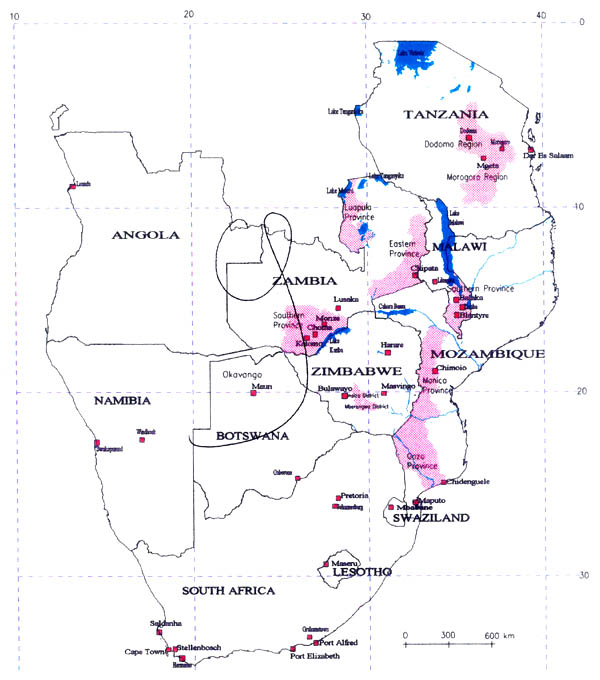The purpose of the joint Evaluation Mission is to examine the experience gained and the results of the whole ALCOM Programme in 1995–96. Its purpose includes also reflections on and proposals for the future of both the core component of this programme funded by Sweden and the small-water bodies' component funded by Belgium. The Mission's Terms of Reference are found in Annex 1.
The evaluation mission was composed of:
After briefing sessions in FAO Headquarters in Rome on 6 and 7 June 1996, the Mission arrived in Harare, Zimbabwe at the ALCOM Programme headquarters on 9 June, 1996. Each member of the Mission received a copy of the Resource Book (2 Vol.) prepared by ALCOM Staff (Annex 29). The Mission completed its report in Harare on 15 July and debriefed with BADC and FAO/SAFR on the next day. It travelled back to Rome on 17 July, 1996 to debrief in FAO Headquarters on 19 July 1996. A detailed account of the Mission's working schedule is presented in Annex 2.
The Mission has had the opportunity to interview and hold working sessions with all actual ALCOM staff (HQ/field) as well as with numerous representatives of international (e.g. FAO. UNDP, EC, SADC), national, provincial/regional and local agencies/authorities, both in Harare and during the field visits in Malawi, Mozambique, Tanzania, Zambia and Zimbabwe. Two bilateral funding agencies could be contacted in Harare (BADC and SIDA). Field activities were inspected in five countries. This gave the opportunity to discuss workplans, progress on activities/outputs, implementation problems, etc.… with national/international ALCOM staff and local authorities. Great efforts were made to dialogue with the target population made of extensionists (fisheries/agriculture), small-scale fish farmers, women's groups and community members of villages interested in exploiting the SWB water resources. A list of the main resource persons interviewed by the Mission is presented in Annex 3.
